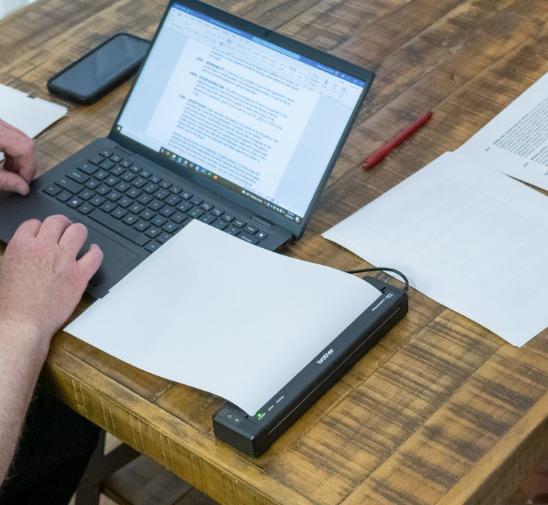It's fascinating how there has been a regression in the miniaturisation of printing and plotting technology since late 1980s'.
-
It's fascinating how there has been a regression in the miniaturisation of printing and plotting technology since late 1980s'.
In mid-to-late 1980s, portable typewriters got really neat and small, nearing the size of laptops of the time. The printing mechanisms themselves became capable of doing (dot matrix) graphics, even four-colour plottery, and took relatively small proportions of the hole devices.
If the development had continued at the same pace, increasing amounts of computing power would have been packed into these devices, and eventually, they could have become just laptops that printed on paper instead of using a screen, or in addition to using a screen.
But instead, in our timeline, screen-only laptops overtook them, the tiny printer tech was scrapped, and computer-specific printers have been needlessly bulky ever since, without any real further miniaturisation going on.
-
Ursidinoj/The Bjornsdottirsreplied to Riley S. Faelan last edited by
@riley Wow, that's bleak. #krokodili
-
Riley S. Faelanreplied to Ursidinoj/The Bjornsdottirs last edited by [email protected]
@ellenor2000 It would have been nice to have the sort of 1990s where your typewriter would have a quiet inkjet or bubblejet head, and an optical sensor to find form lines or other graphical markings on the paper rolled into it, so that it would make its additions in synch with the form's lines, no matter how imprecisely you roll it in.
After all, forms didn't go away in the Internet Age. The whole sales point of Adobe Acrobat used to be, it helped one to fill out "electronic forms".
-
@ellenor2000 Alas, looking at the modern-day dysfunctional tech, if we ever get there, it will be sold as a "paper-based ChatGPT terminal" instead.
-
@riley I don't get that. I see tiny printers everywhere. They just don't make sense for office printers.
-
@riley have you seen brother thermal printer like https://brothermobilesolutions.com/products/printers/pocketjet/pj822/ ?

-
@mhd You see narrow printers, not shallow printers. While some price-sensitive lines experimented with narrow printers for cheap personal computers (and these were typically thermal printers), the typewriter-class systems typically had printers capable of printing on A4/US Letter paper, but in a fairly small limited space, taking literally an order of magnitude less volume than a typical modern 'small' single-tray office printer.
-
@gkrnours Yes. Not happy about the 'thermal' part. It requires specially coated paper with known health, and environmental pollution, and archivability issues.
-
@riley I thought it worked by burning standard office paper. Use of novelty paper makes it a lot less interesting
-
@gkrnours No, the sort of devices that could burn office paper take more space.
(I did some experiments with burning text onto office paper with a laser cutter a couple of years ago. Gave up because I realised that doing it right would require a feedback control system that I couldn't be arsed to build. But I still think that deliberately laser-burnt edges on a paper can be neat for certain kinds of decorative purposes. (If you only have one limit, not two, you don't need advanced feedback, so burning the edges is a lot easier than carefully burning letters onto a paper without burning through it.)
There's a middle road, though, thermal transfer. It's used in Brother's label printers, I believe. But it requires special and bulky supplies, and Brother wouldn't call a thermal transfer printer a termal printer. I'm pretty sure that this one gets to be so thin by comprising of a pair of rollers, a scroll motor, and a row of thermoresistors to trigger the thermal coating of the sort that old-school faxes used to take.
